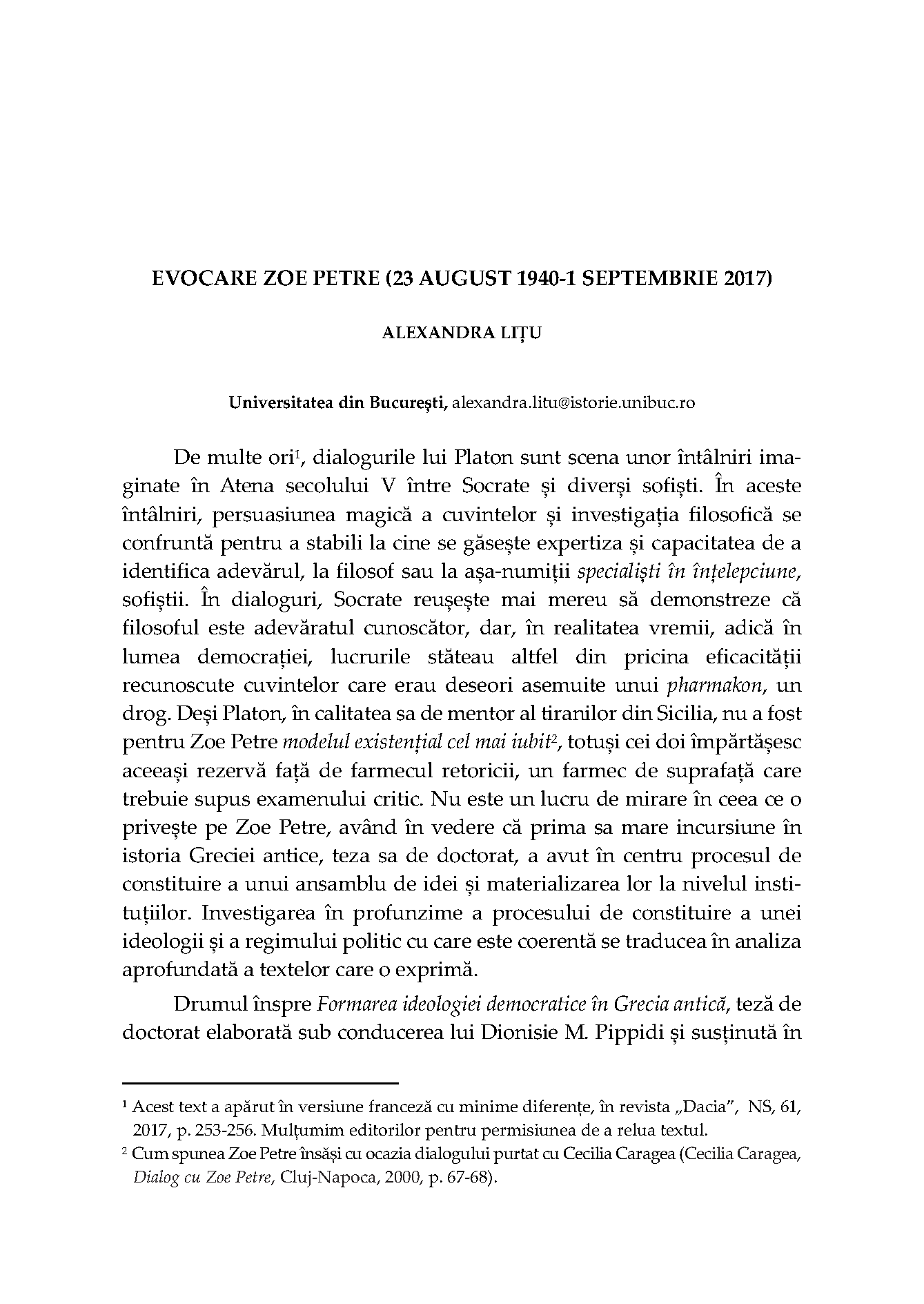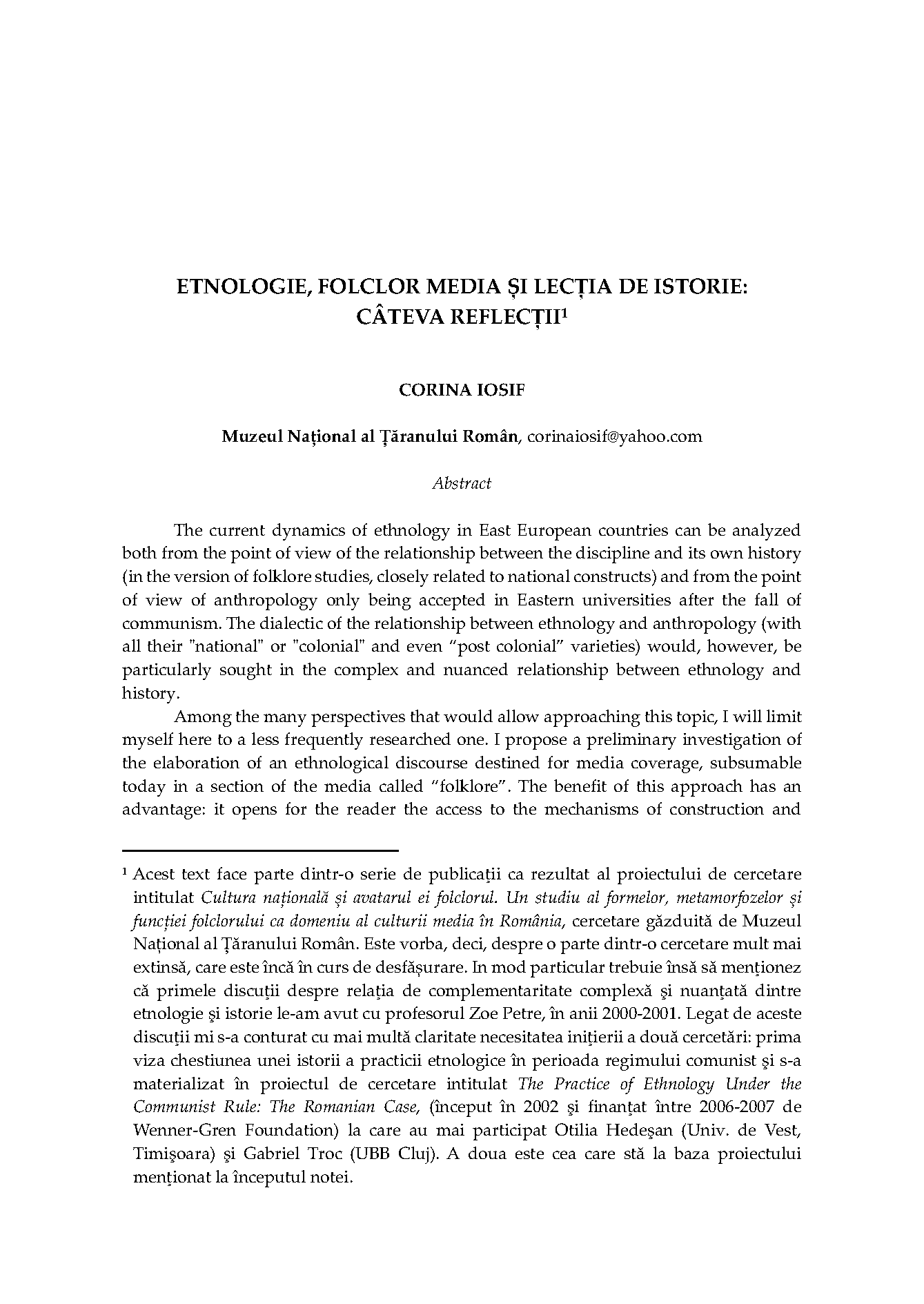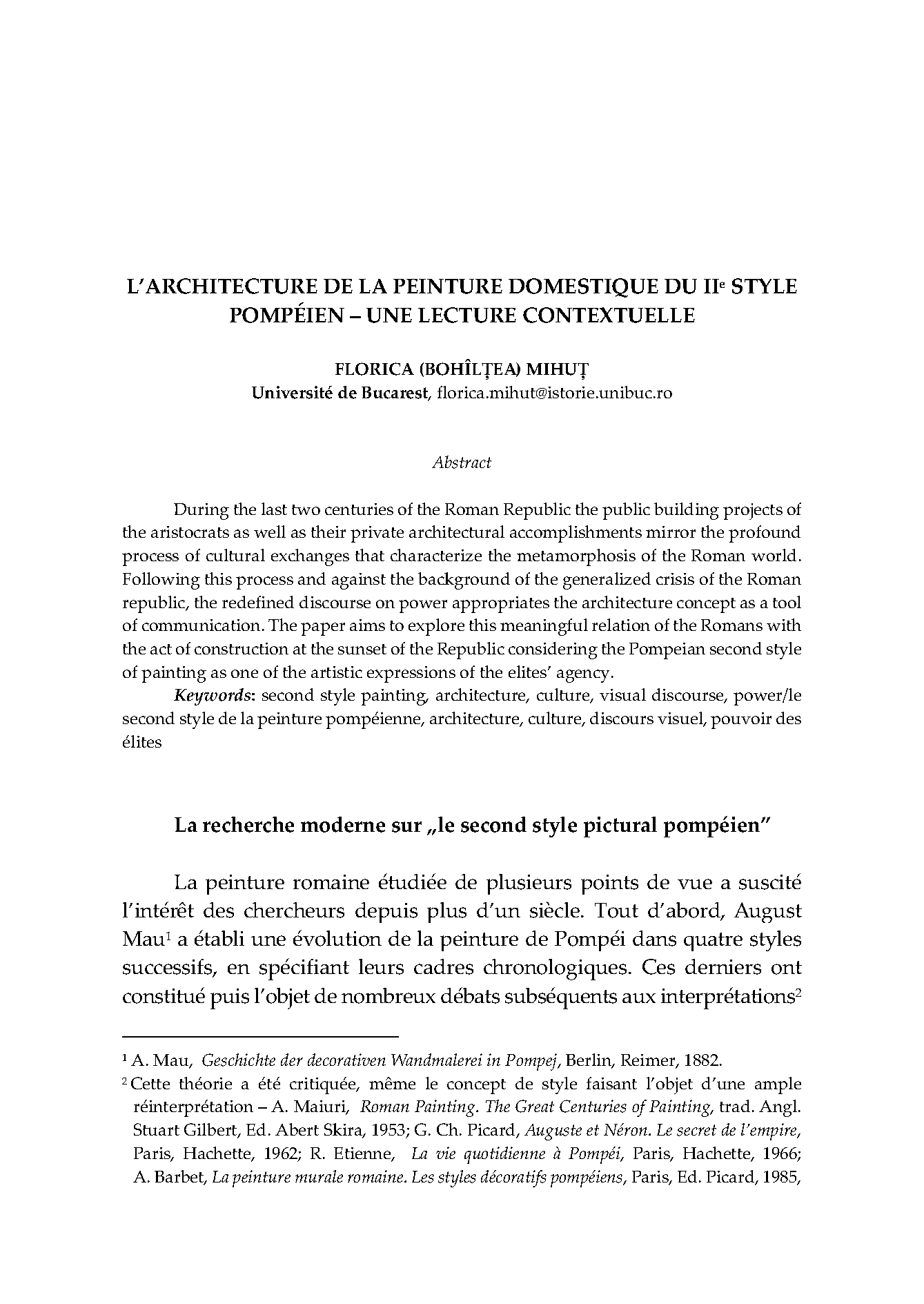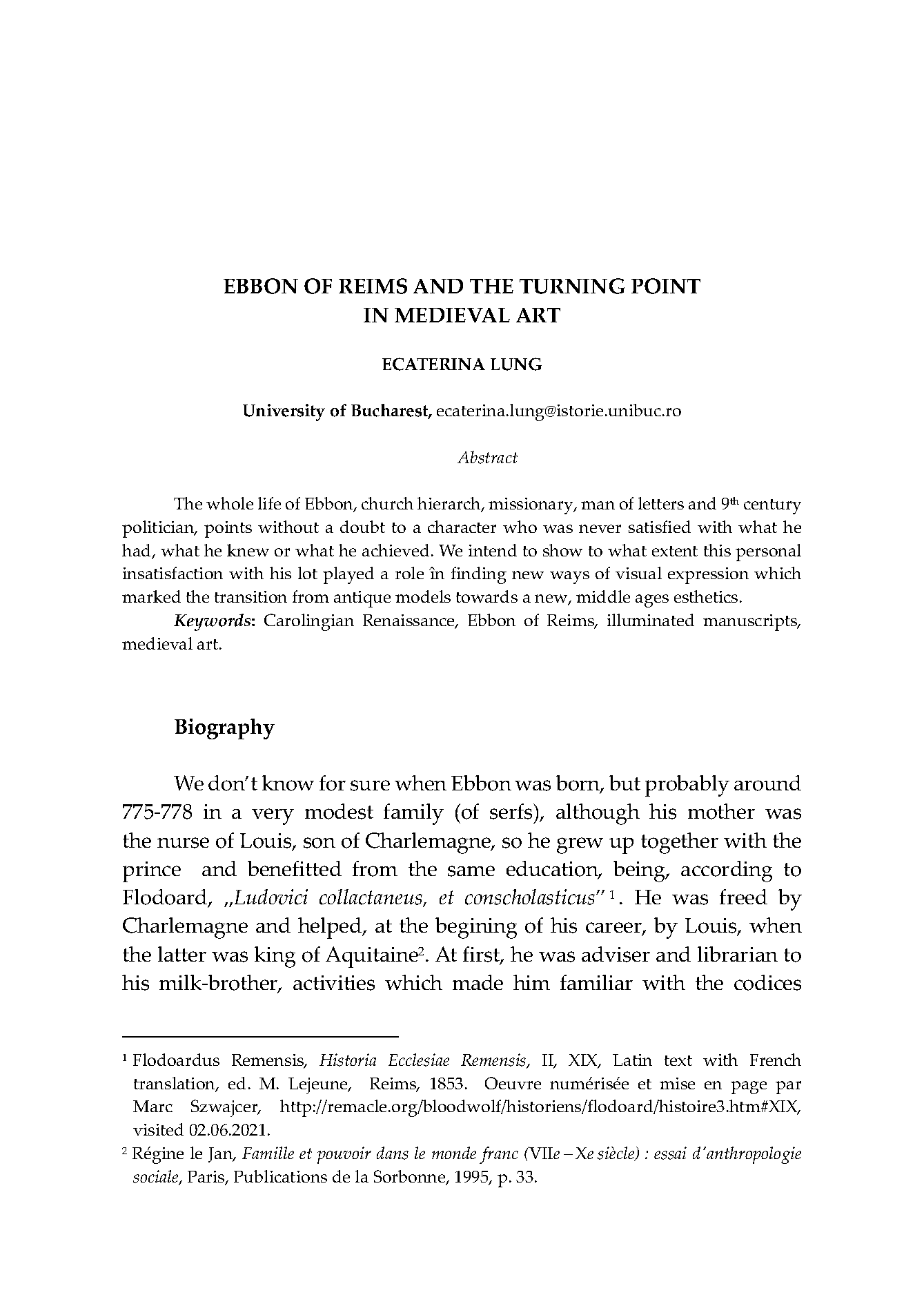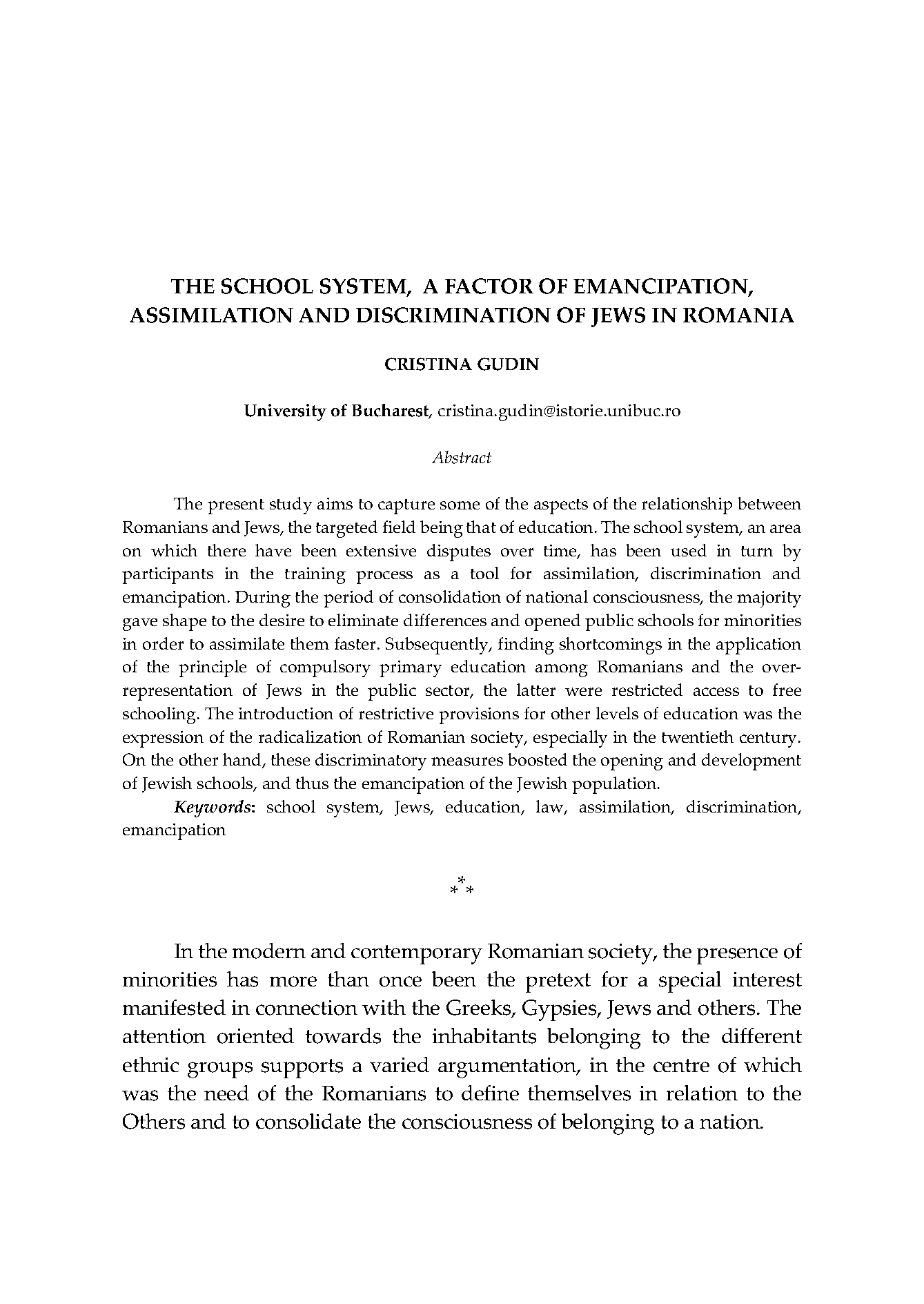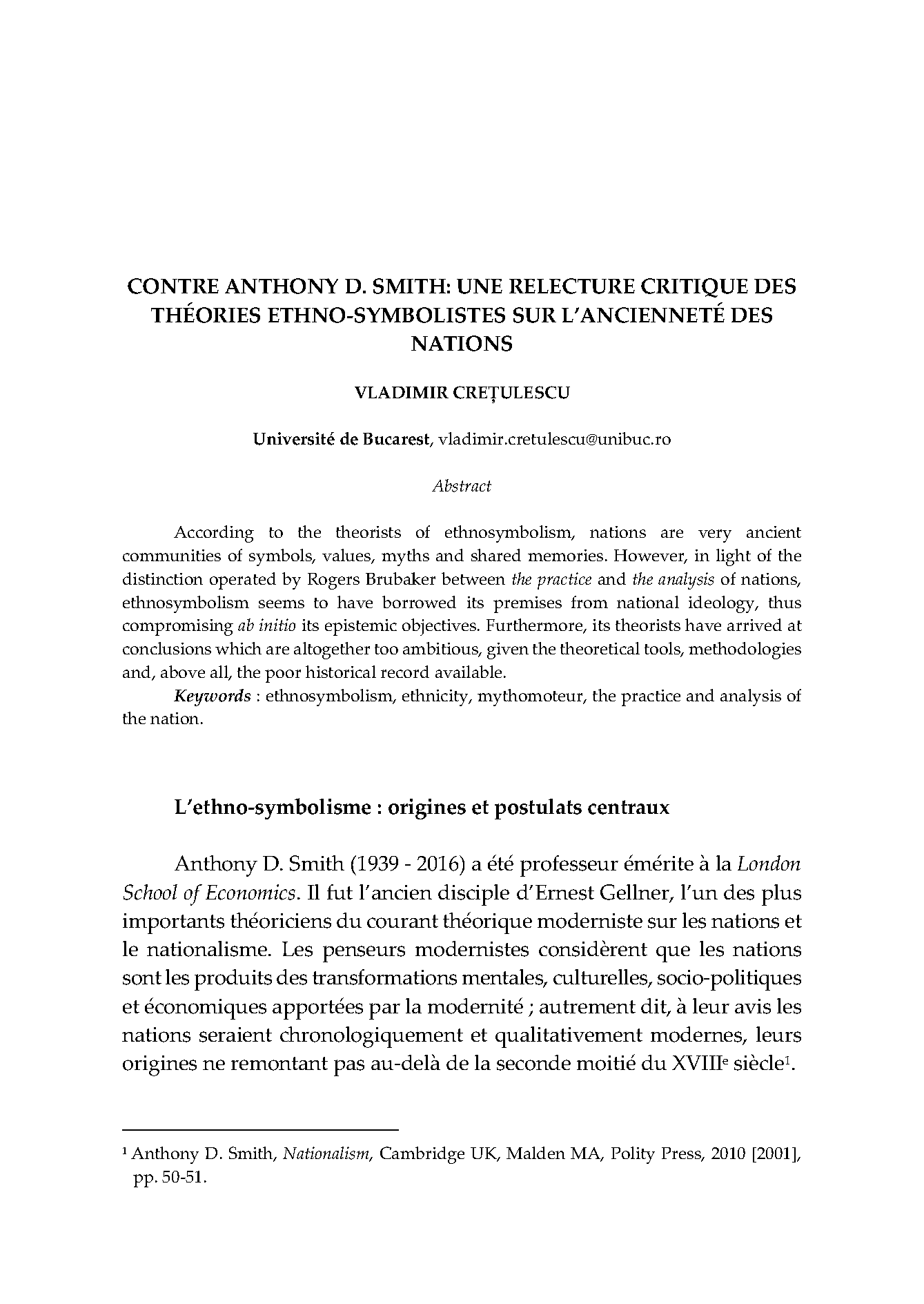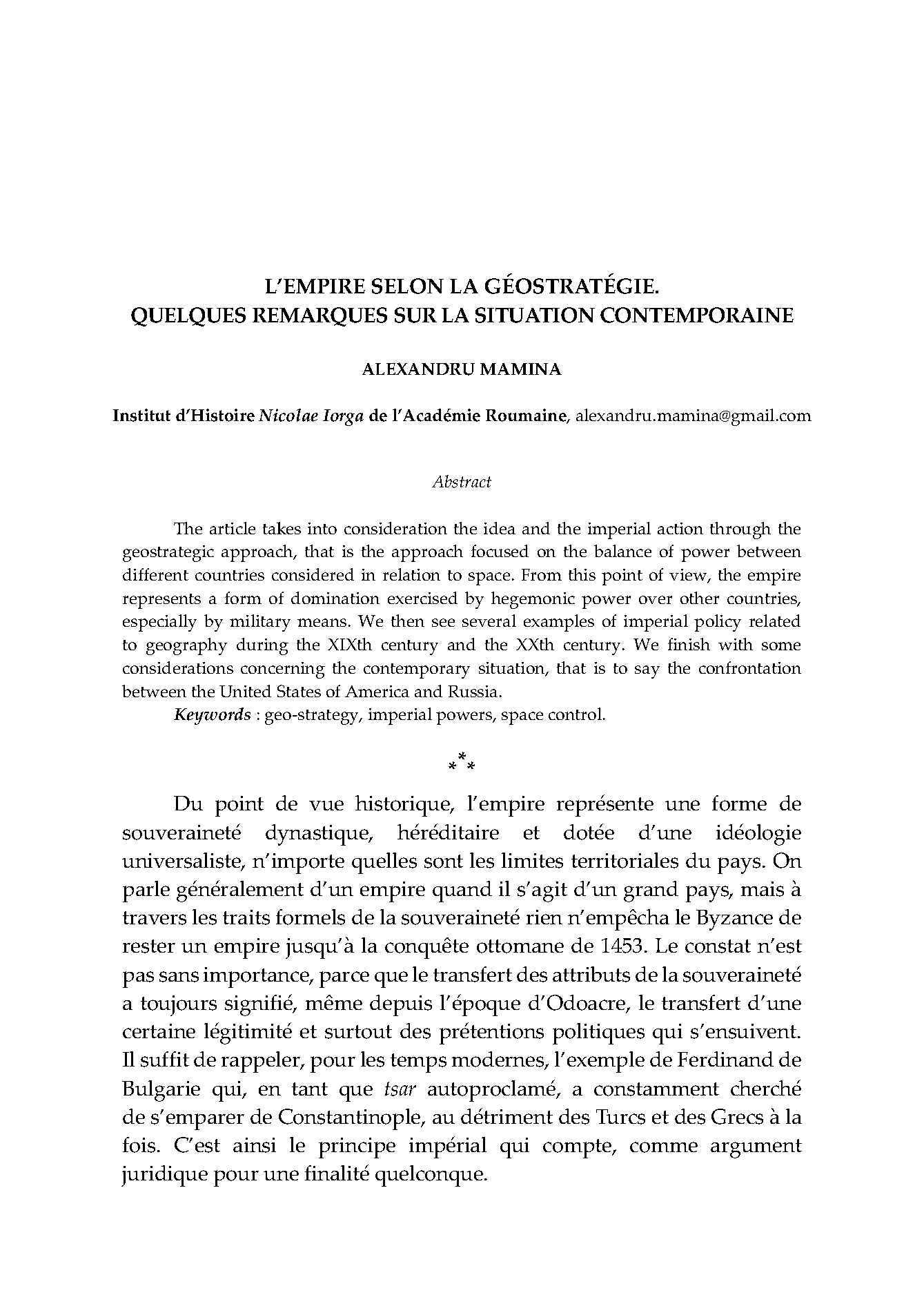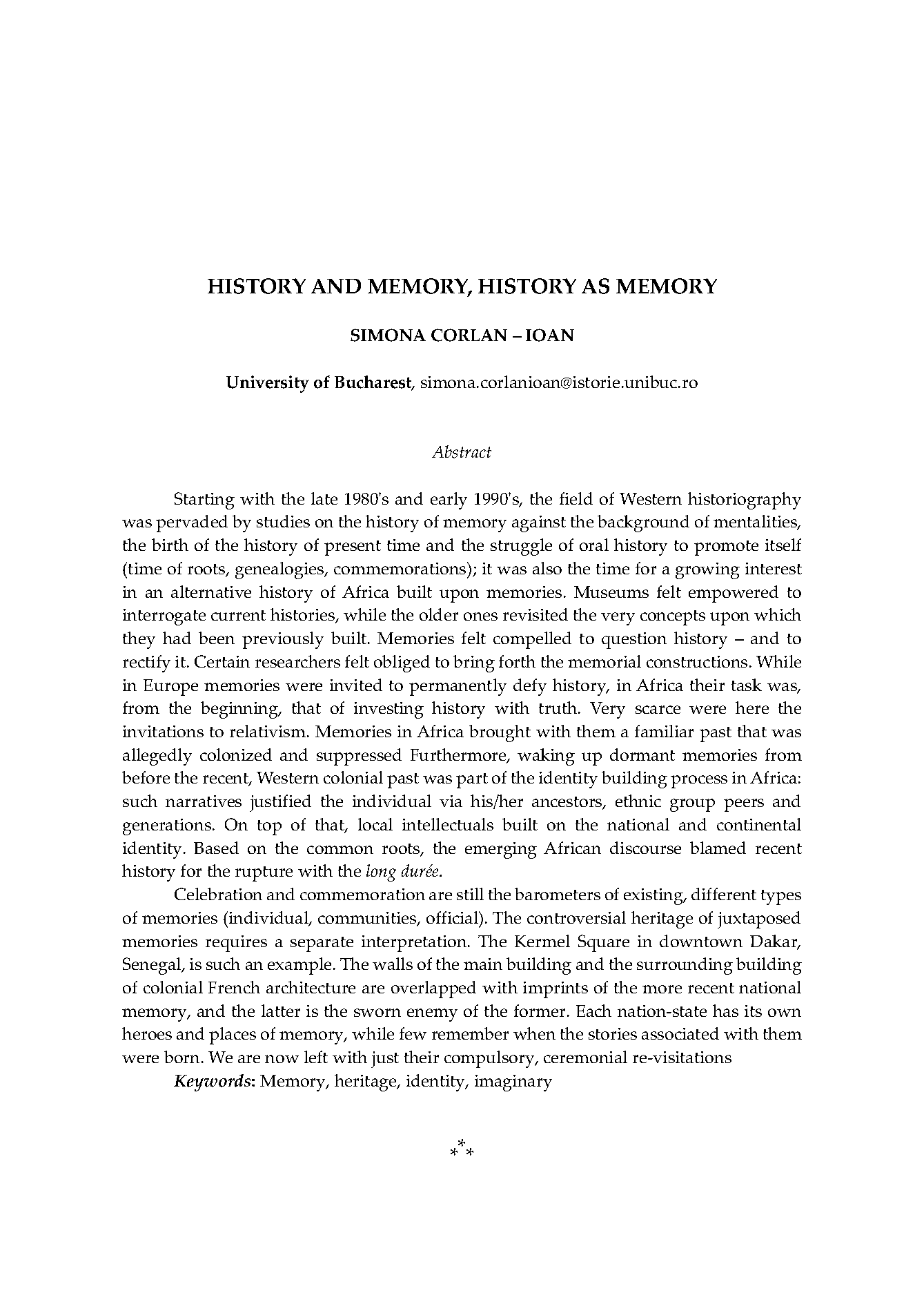Volum 69 Nr. 1-2 (2020): ANALELE UNIVERSITĂŢII BUCUREŞTI - ISTORIE

Zoe Petre would have turned 80 years old in 2020 and her former students were thinking about preparing a conference to honour her, as a certain tradition in historians’ world goes. But in 2017 the news of her passing away came like a blow and the proposed conference never took place.
Instead, we thought of something else, more modest but appropriate: a special issue of the journal Analele Universității din București. Seria Istorie. Zoe Petre had meaningful contributions in transforming the journal into a significant one, being involved in its editorial board and later on in its
scientific board. She published in it and supported the younger scholars who were interested in forging an academic carreer to submit their papers to it. She believed that the history journal published by the University of Bucharest should reflect the variety of subject matters and methodologies that were characteristic of the Faculty and this tradition continues to this day.
Hence, this special issue reunites contributions written by Zoe Petre’s former students, some of them having even the privilege to have been her colleagues for a while. All of the authors are giving thus testimonies about the essential influence that the great professor and mentor had over their
formation. All of the authors would have liked to thank her more often for all she had done for them and the articles reunited here are only a small token of their gratitude. (Ecaterina Lung)

